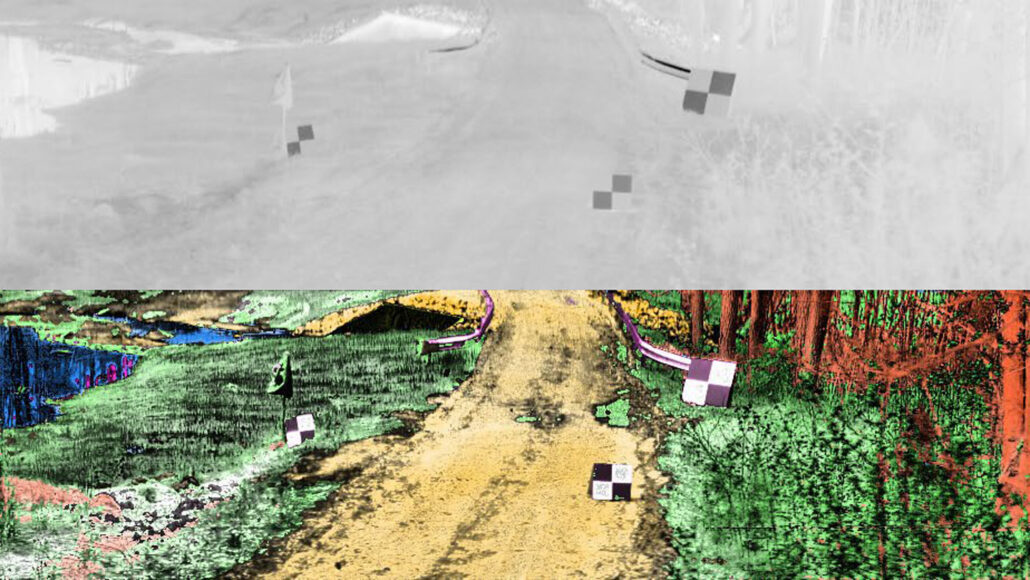Questions for ‘AI can now turn blurry thermal vision into crisp images’

A typical thermal-vision image (top) renders this nighttime scene of a forest road in ghostly grays. Artificial intelligence takes those thermal data and creates a sharper image (bottom). The system adds color based on the objects detected — shading water blue, for example, and plants green.
F. Bao et al/Nature 2023